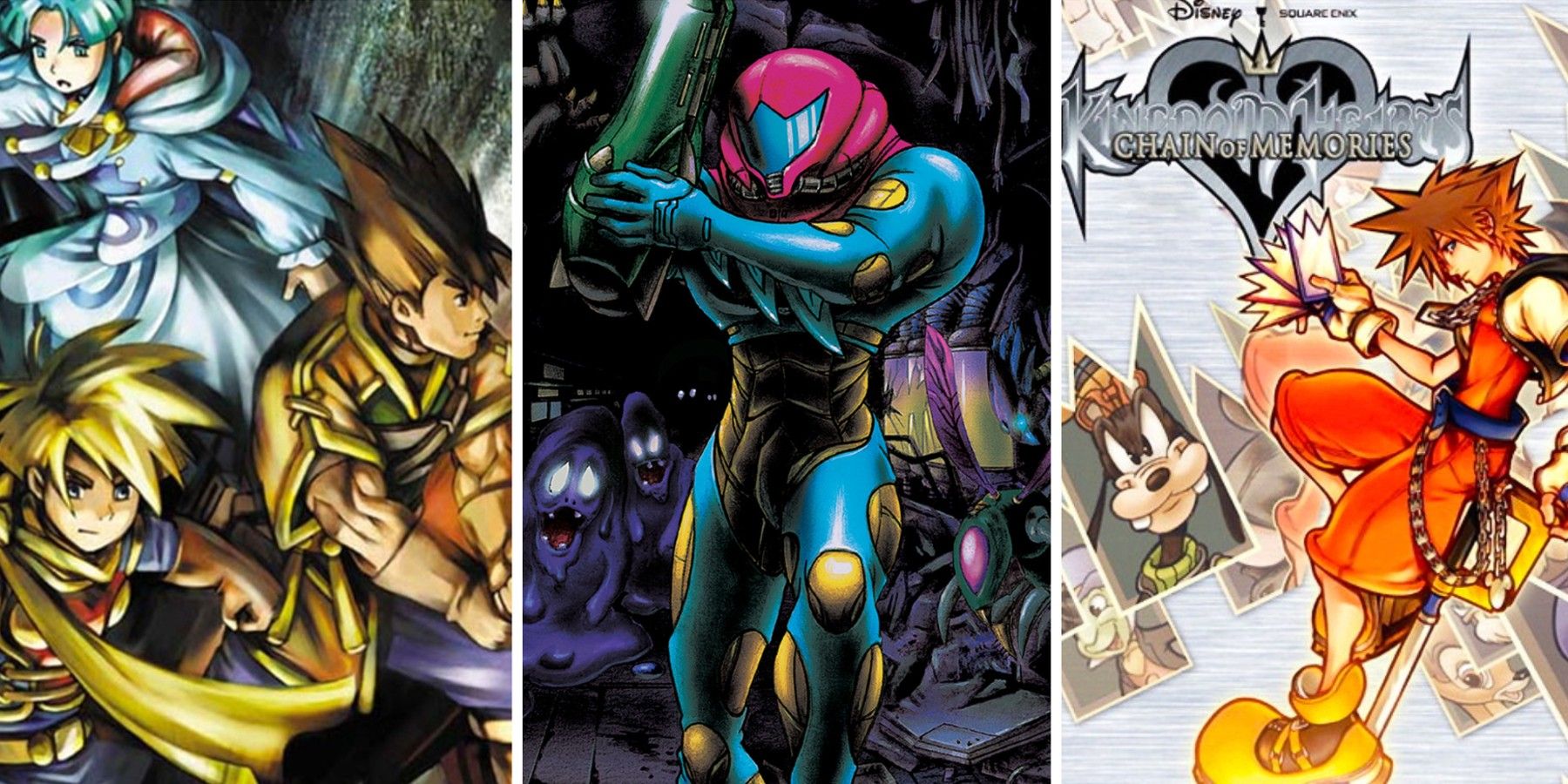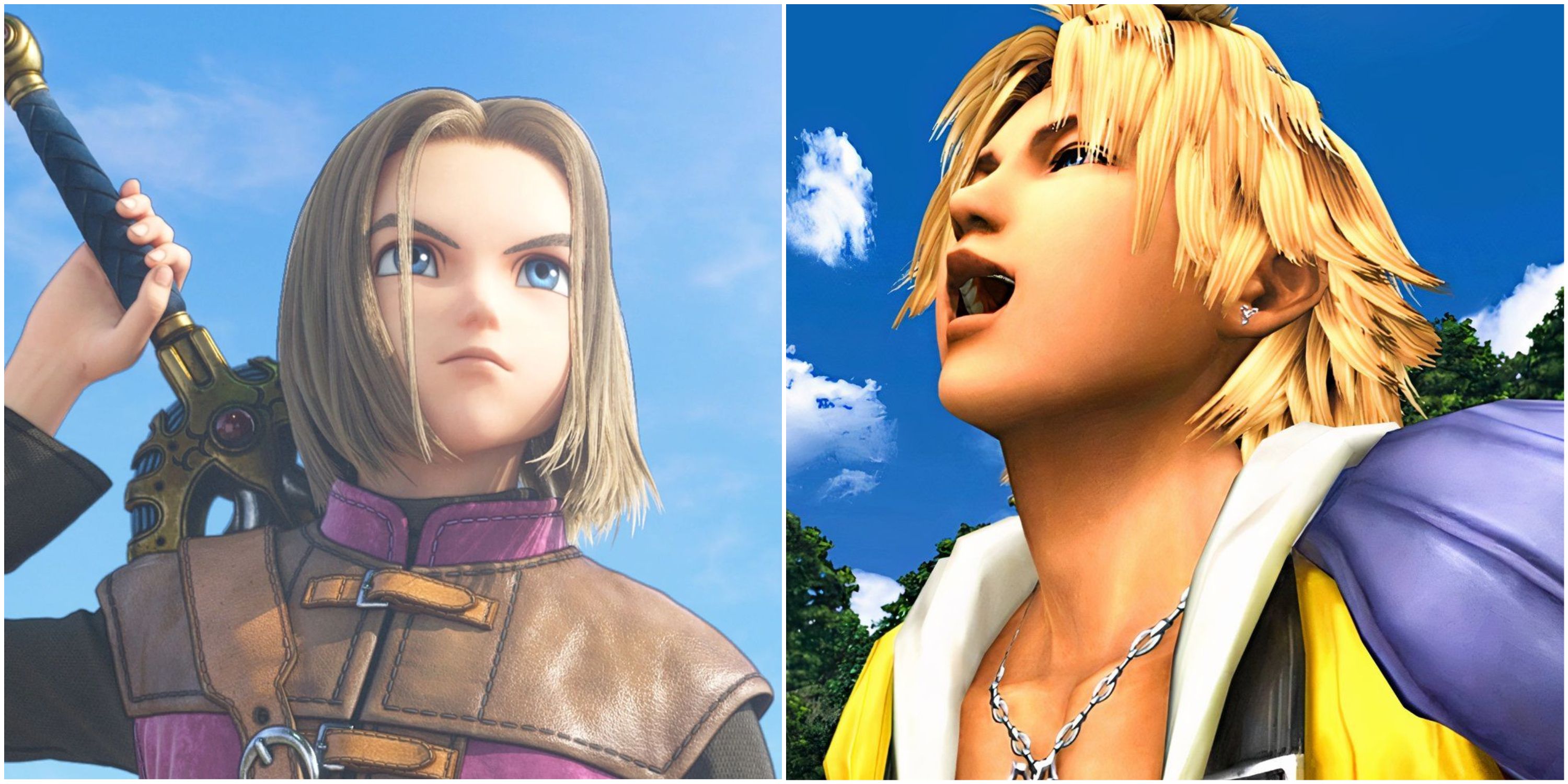Summary
- Final Fantasy 9 has the most balanced random encounters in the series, providing a fair and fun experience without slowing down exploration.
- Dragon Quest 11 Definitive Edition’s retro mode adds random encounters, offering a nostalgic twist to turn-based battles without becoming a drag.
- Suikoden 2’s random encounter system may have high rates, but the experience scaling reduces grinding, encouraging switching characters and exploration.
When it comes to gaming, one person’s pain is often another person’s pleasure. For every gamer who hates a certain mechanic or feature, there’s likely to be another who loves it. This is especially true in the world of JRPGs, which have some of the most notoriously controversial hallmark features of any genre. Yes, we’re talking about turn-based battles and random encounters.
12:54

Related
15 Best Turn-Based Strategy Games of All Time
With so many games to choose from within the genre, Joel RPG gives us their list of the best turn-based strategy games that can be considered classic
Both of these mechanics were once staples of the JRPG genre, but in recent years the industry has been moving away from both. That’s a problem because, while some modern fans don’t have the attention span for turn-based battles, plenty of fans still love them. After all, many of the best JRPGS have turn-based battles. Likewise, random encounters offer a level of challenge that overworld enemies can lack. Random encounters have all but vanished from modern games but some gamers still view them with a level of nostalgia, however irritating they could be.
These are some of the best JRPGs with random encounters, ranked on a combination of their review scores and how good their random encounter systems were.
For franchises with multiple games with random encounters, like Final Fantasy, we’ve chosen the entry generally believed to have the “best” random encounter mechanic.
9 Phantasy Star 4
Macros And Combos Made Battles Less Of A Drag
Phantasy Star 4
- Released
- December 17, 1993
Phantasy Star 4‘s random encounters are a bit of a mixed bag. The game might have been one of the best Sega Genesis RPGs, but its random encounter rate has always been a bit of a problem. Back in 1993, some complained that the game’s encounter rate was too high, but by modern standards, it’s especially grueling. Early game, the random encounters make exploring dungeons a frustrating experience, but in late-game dungeons where each battle is a test of skills, it’s particularly aggravating.
4:47

Related
8 Best JRPGs Developed Or Published By Sega, Ranked
While not associated with the genre all that much, Sega has developed or published a few of the best JRPGs of all time.
However, a handful of things stop Phantasy Star 4 from being knocked off this list entirely. For a start, it’s just a great JRPG that remains a lot of fun to play. The random encounter rate might be high, but the battles themselves tend to be over fairly quickly and are often over in a few seconds. Random encounters can get repetitive but Phantasy Star 4 includes a macro system that’s used to issue commands and execute powerful combos. Random encounters offer the perfect chance to experiment with these macros and master the game’s battle system. Doing so negates some of the game’s difficulty and is intensely rewarding.
8 Bravely Default
Customization At the Cost Of Balance
Bravely Default remains a Nintendo 3DS exclusive. Despite being one of Nintendo’s hardest RPGs, it had an excellent random encounter system that other JRPGs could learn from. Plenty of JRPGs let players manipulate random encounter rates by equipping or using items, but Bravely Default lets players directly control the rate. It could be decreased so that the player could explore areas more freely and then ramp up again when it was time to grind.
Likewise, battle speed could also be sped up to 4x, something that made grinding less of a pain, especially when used in conjunction with the auto-battle mechanic. On top of this, the game includes a job system that encourages experimentation with 23 jobs in total. But not all JRPG fans were impressed with Bravely Default‘s approach to random battles. The game gets a lower ranking because its customizability kind of defeats the point of having random encounters. If abused, it sucks some of the tension/difficulty out of exploration while also causing balancing issues.
7 Golden Sun
Random Battles And Puzzles Go Hand In Hand
How good Golden Sun‘s random encounter system is largely depends on who one asks. While many fans found the encounter rate to be reasonable, some felt that, especially later on, battles became too frequent. This not only hurt the game’s pacing but made it artificially difficult.

Related
The Most Graphically Impressive Game Boy Advance Games
The Game Boy Advance is still one of the most impressive handheld consoles of all time, with a handful of games still looking gorgeous today.
The game also includes random battles in puzzle areas, something that’s sure to anger some players (although it did at least decrease the encounter rate in these areas). On the other hand, the game’s random encounters were well-tuned enough that excessive grinding was never really necessary if all the player wanted to do was progress the story. The battles themselves were quick and snappy and playing around with Djinn and psyenergy combinations was a lot of fun, so the occasional grind wasn’t too boring. Overall, Golden Sun was an excellent JRPG with an average random encounter system, earning it a respectable ranking.
6 Shin Megami Tensei 3 Nocturne
A High Encounter Rate But Exceptional Combat
- Released
- October 12, 2004
Later Shin Megami Tensei and Persona games (spin-offs of this iconic series) gave up random encounters for overworld enemies, but Shin Megami Tensei 3 is chock-full of random encounters. Sometimes to a fault. Many fans felt the game’s encounter rate was a little too high, especially in dungeons, and that there were too few safe zones. An argument could be made that the constant battles made exploration a chore and hurt its pacing. However, the random encounters are a big part of the game’s appeal.
Shin Megami Tensei is famously one of the best turn-based JRPG franchises and the combat in this entry was epic. Fans of Persona will immediately be familiar with the Press Turn battle system, which rewards extra turns for exploiting weaknesses and scoring crits. This system gives the game’s battles an extra level of depth and even the weakest enemies are dangerous to players who refuse to master it. Another big part of the game’s appeal is the collecting of demons the player can negotiate with, aka catch, in battles. There are around 200 to collect and the game’s high encounter rate makes hunting them down a bit easier. For those who are more easily frustrated, the HD remaster of the game introduced Merciful difficulty, which among other things lowers the encounter rate and generally makes battles easier. Even if the game’s constant encounters might annoy some, its general quality puts it above lower entries.
5 Pokemon Black 2 And White 2
Made Great Changes To An Aging System
Pokemon Black 2 and White 2 don’t make this list because they’re the best Pokemon games but because of the changes, they made to the franchise’s random battle mechanics. Until fairly recently, random encounters were a cornerstone of every Pokemon game but they could also be incredibly frustrating. No one likes fighting dozens of the same trash enemies just in the hopes of catching one rare Pokemon.
This generation added “shaking spots.” These made it much easier to find rare Pokemon not normally found in grass or Pokemon that grant extra EXP. It also added dark patches which triggered exciting double battles against two wild Pokemon at once. Finally, hidden grottoes were a new feature that allowed players to encounter rare Pokemon with hidden abilities. These changes to how random encounters worked made grinding feel more fun and streamlined how to find certain Pokemon, especially when using the new Habitat Pokedex. No wonder the games went on to be two of the best-selling Pokemon games ever.
4 Digimon Story: Cyber Sleuth
A Refreshing Take On Creature-Collecting
Digimon Story: Cyber Sleuth
- Released
- February 2, 2016
- Developer(s)
- Media Vision
A Digimon game ranking higher than Pokemon is sure to be seen as sacrilege by some, but there’s a method to the madness. While plenty of games have cloned Pokemon’s creature-collecting formula, Cyber Sleuth does its own thing. In the process, it makes its random encounters not just bearable, but fun. In Digimon Story: Cyber Sleuth, Digimon aren’t simply caught in battle. In addition, each battle against a Digimon increases its “scan rate.” Once that reaches 100%, the player can create their own version in the DigiLab.
This system makes fighting the same enemies repeatedly far less annoying and the whole process of collecting new monsters less reliant on RNG. The game also allows the player to adjust the encounter rate using hacking skills. If they want, they can reduce the rate, stop random encounters entirely, or forcibly trigger them. And if players don’t use hacks, the encounter rate was mostly seen as nicely balanced anyway.
3 Suikoden 2
A Grind If You Don’t Switch Characters Regularly
Ranking Suikoden 2 isn’t easy. On the one hand, it’s one of the greatest JRPGs of its era with an awesome story, beautiful art, and a great turn-based system. On the other hand, its random encounter mechanics aren’t great. Generally speaking, the encounter rate is arguably too high, with some areas like the Tinto Mines feeling extra punishing. It’s way too common to finish one grueling battle, take two steps, and find oneself starting another.

Related
Best Konami PS1 Games, Ranked
Konami had a lot of worthwhile hits on the PS1. These are some of the best.
This being said, it’s still better than in the original game. Furthermore, the random encounter system was designed to prevent grinding. The game has 108 characters to collect, many of whom can be used in battle. Grinding levels for all of them would be beyond painful, but Suikoden 2 has an experience scaling system that makes it much faster for low-level characters to level up. Combined with a generally high encounter rate, this meant grinding never really became an issue. Likewise, if players enjoy experimenting with new characters, this high encounter rate just means lots more chances to play around with the newest find. Suikoden 2 gets a good ranking for being an awesome game with a less-than-amazing random encounter system.
2 Dragon Quest 11 Definitive Edition
The Retro Mode Is Nostalgically Awesome
- Released
- September 4, 2018
The standard version of Dragon Quest 11 was already one of the best games in the series, but the definitive edition made it so much better. In fact, it’s the whole reason the game is even appearing on this list at all. The standard version of the game only features overworld encounters, but the definitive edition added retro mode. This transformed Dragon Quest 11 from a modern 3D JRPG into a retro sprite-inspired one that’s an homage to Dragon Quest games of old.
Most of the game can be played in retro mode. Doing so changes pretty much everything but the story and introduces random encounters. Unlike the games of old, the encounter rate is balanced and adds a nice nostalgic twist to the turn-based battles. This mode also offers up battle speed options to make sure the random encounters don’t become a drag. While most players likely played the whole game in 3D mode, it’s worth going back to doing it all again in retro mode with turn-based battles. It’s one of the best ways to play one of the best modern JRPGs.
1 Final Fantasy 9
A Fair And Fun System That Needs No Tweaking
Fans could argue all day about which Final Fantasy is best, or which has the best battle system. However, there is one clear winner when it comes to the best random encounters. Final Fantasy 9 isn’t just one of the most timeless Final Fantasy games, it has the most balanced random encounter rate and a battle system that never grows tiresome.

Related
Final Fantasy: 6 Best Endings In The Series, Ranked
The Final Fantasy series has told some exceptional stories, but which one wraps things up in the most beautiful way?
Final Fantasy 9 never feels like it’s punishing the player with too many random encounters, and they never feel like they’re slowing down exploration. The game also has an impressive diverse roster of enemies, even within areas and dungeons, which keeps battles interesting. The actual turn-based combat was also excellent and up there with the best in the series. Many modern players dislike random encounters, but Final Fantasy 9 highlights how good the mechanic can be when it’s properly balanced.

More
Square Enix’s Best Turn-Based JRPGs, Ranked
From Final Fantasy 10 to Dragon Quest 11, here are the finest turn-based JRPGs Square Enix has developed, and how they rank up.















Leave a Reply